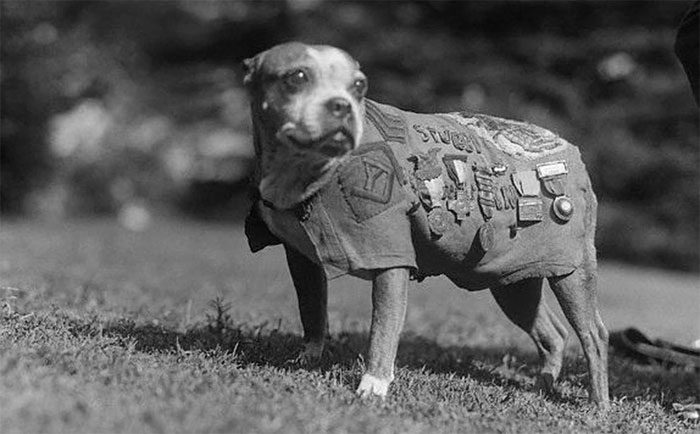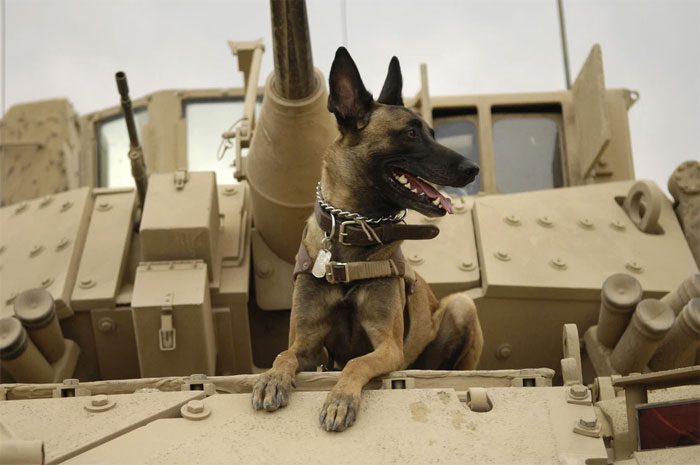Dogs were utilized by the Egyptians, Greeks, Persians, Sarmatians, Baganda, Alans, Slavs, English, and Romans. According to ancient records, the earliest documented use of dogs in warfare occurred when the Lydians fought against the Cimmerian Empire around 600 BC.
In the early days, dogs were used to break enemy formations, charging into ranks and biting as many enemy soldiers as possible. Skilled forces would wait and attack the enemy right after the dogs caused chaos among their ranks.

Sergeant Stubby.
As warfare modernized, dogs also underwent similar innovations. They were outfitted with armor to avoid injury in battle. Scientists began breeding and modifying dogs to create new generations that were better suited for combat.
Additionally, dogs took on new roles such as: messenger, guard, and scout.
In American military history, dogs primarily served to boost morale and perform tasks such as surveillance and guarding. Notably, during the American Civil War, a Confederate spy hid secret documents in his dog’s fur and safely delivered them to the army.
When World War I broke out, dogs were assigned as mascots for units in battles. The most famous among them was Sergeant Stubby, who alerted soldiers to gas attacks, saved many lives, and helped locate the wounded.
Stubby became the first dog in American military history to be awarded the rank of sergeant.

Military service dog of the U.S.
The advent of communication systems during World War I also brought many new roles for animals, including dogs serving as “engineers” to lay cables and communication lines when necessary, becoming hard-to-target assets.
In World War II, dogs returned to their previous roles, with the Soviet Red Army training them to carry bombs to run alongside German tanks for destruction. The first parachuting dogs fought during D-Day alongside British paratroopers against the German army.
One of the most famous dogs of World War II was Chips, a mixed breed of German Shepherd, Collie, and Husky, who captured 14 Italian soldiers during a battle on the island of Sicily despite being injured.
In Vietnamese history, Emperor Lê Lợi is noted for having a skilled canine army with over 100 dogs, cared for and trained by the renowned general Nguyễn Xí. They participated in defending the nation and have gone down in history.
Today, many countries’ militaries have established training facilities with 85% of dogs coming from Germany or the Netherlands and 15% bred domestically. Their training courses include detecting explosives or drugs, serving in combat roles.
In Iraq and Afghanistan, dogs primarily served in the role of detecting explosives, helping U.S. and allied forces avoid landmines. They also participated in special operations, including direct combat with enemies and missions to eliminate Osama Bin Laden.





















































